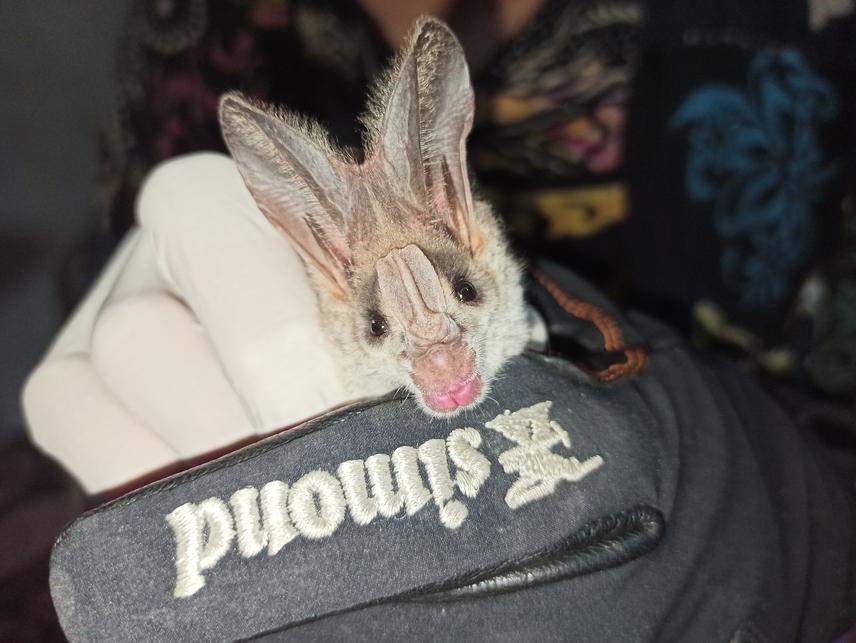Iqbal Singh Bhalla
Over the course of this project, I aim to do three things. First, to create a habitat suitability model of insectivorous bats in a rice landscape. Second, to describe the diet of one or two focal species of generalist hawking insectivorous bats present in such landscapes. Third, to conduct an economic evaluation of the insect pest control service provided by the insectivorous bat community that hunt in rice fields.

Greater false vampire bat.
I aim to create a habitat suitability model, perform a diet analysis and conduct an economic evaluation of insectivorous bats in rice fields of Assam.
I will be using mist nets to trap bats in a rice dominated landscape and, in parallel, acoustic recorders to survey bat community composition at regular intervals along transects. The acoustic recorders will be used to gather data on abundance and distribution of various bat species which will be analysed using the call library created on field. This data will be used to create a habitat suitability model of insectivorous bat species in the landscape.
Bats caught in mist nets will be photographed, weighed and either released immediately or placed into cloth bags for three hours. Those released immediately will be recorded to built a library of echoloation calls made by various species of bats in the landscape. Bats which are placed in cloth bags will be those species of generalist hawking insectivores which are likely to play a role in pest control of insect pests. After release, the scat left in the bags will be used for diet analysis to determine, down to the species level, the diet of these key bat species.
The economic evaluation will take the form of will take the form of six, 10m by 10m enclosures, containing approximately 2500 individual plants. The enclosures will be located at different distances from forested area, and will be removed during the day and replaced at night. Each treatment plot will have a corresponding control plot, and comparisons will be made of the rice health at six intermediate stages of growth, as well as of the total yield at the end of the field season.
This will be used for the most important part of my thesis – the valuation of the pest control service performed by bats in rice fields, and, in conjunction with the habitat suitability analysis, will be used to suggest changes to landscape design to maximise the abundance of important bat species in rice fields.